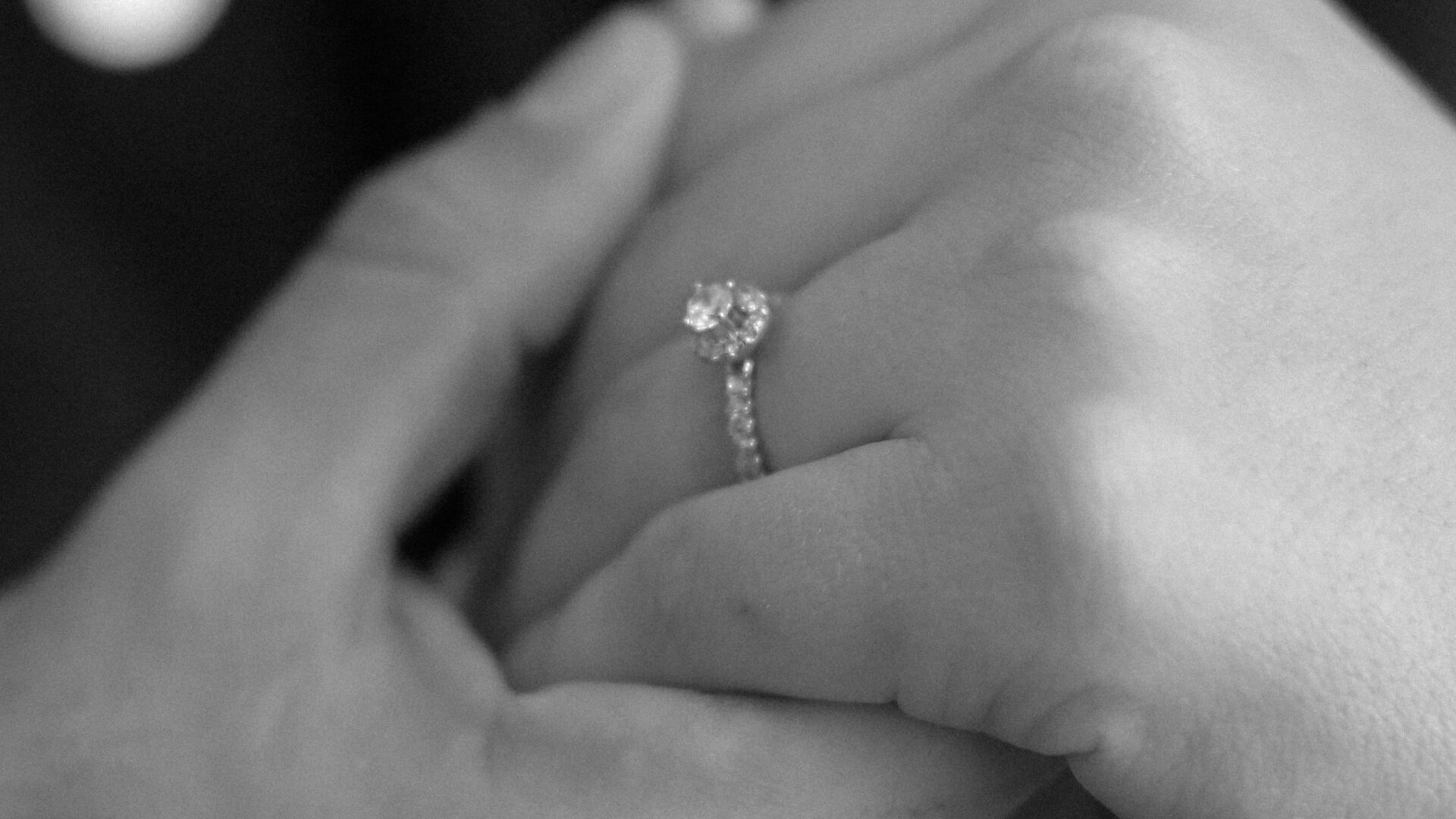
Choosing the perfect engagement ring is a significant and often overwhelming decision. For many, it marks a milestone in a relationship—an important moment that symbolizes love, commitment, and the promise of a shared future. Whether you’re a first-time buyer or just looking for some guidance, this comprehensive engagement ring guide will walk you through everything you need to know, including how to pick an engagement ring, how to buy an engagement ring, and how to navigate the various options available to you.
In this blog, we’ll answer common questions like “Does an engagement ring have to be a diamond?” and offer tips on where to put the engagement ring once you’ve chosen the perfect one.
Understanding the Basics: What is an Engagement Ring?
Before diving into the specifics of how to buy an engagement ring, it’s important to first understand what an engagement ring represents. An engagement ring is typically given during the proposal, symbolizing the commitment to marriage. Traditionally, engagement rings feature a diamond, but there are now many other options available, depending on personal preference and budget. The ring is usually worn on the fourth finger of the left hand, also known as the “ring finger,” as it was historically believed to have a vein that runs directly to the heart.
Determine Your Budget
The first and perhaps most crucial step in buying an engagement ring is setting a budget. It’s easy to get caught up in the excitement and spend more than you planned, but having a clear budget in mind will help guide your choices. When determining your budget, consider not just the cost of the ring itself, but also potential additional costs such as resizing, insurance, and taxes.
In Canada, the average cost of an engagement ring can vary widely depending on the type of metal, gemstone, and design you choose. Typically, engagement rings in Canada can range from a few hundred dollars to several thousand. It’s important to know what you’re comfortable spending while still selecting a ring that feels special and meaningful.
Choose the Type of Metal
Once you have your budget in mind, the next decision is the type of metal for the ring band. Common options include:
- White Gold: Known for its sleek, silvery finish, white gold is a popular choice for engagement rings. It’s an alloy of gold mixed with other metals like nickel or palladium and is often plated with rhodium for added shine and protection.
- Yellow Gold: A classic choice, yellow gold is warm and timeless. It’s a great option for those who love a more traditional or vintage aesthetic.
- Platinum: Known for its durability and rich, silvery-white hue, platinum is a high-end metal choice. It’s heavier than gold and is often seen as a luxurious option.
- Rose Gold: A romantic and trendy choice, rose gold has a warm, pinkish hue that many couples are drawn to for its unique, contemporary feel.
Select the Right Engagement Ring Stone
One of the most exciting (and often daunting) aspects of buying an engagement ring is choosing the stone. While diamonds are the traditional choice, there are many other engagement ring options to consider, depending on personal preference.
Diamond Rings
Diamonds have long been the most popular choice for engagement rings, often symbolizing eternal love due to their hardness and timeless beauty. If you’re leaning toward a diamond, you’ll need to understand the 4Cs of diamonds, which are:
- Carat: The weight of the diamond.
- Cut: The quality of the diamond’s cut, which impacts its sparkle and brilliance.
- Colour: Diamonds range from colourless to slightly yellowish. The less colour, the more valuable the diamond.
- Clarity: Refers to the presence of any internal or external flaws, known as inclusions and blemishes.
Other Stone Options
In recent years, alternative stones have gained popularity for engagement rings. If you’re wondering, “Does an engagement ring have to be a diamond?” the answer is no! Many couples opt for gemstones such as sapphires, emeralds, rubies, and even moissanite. These stones are durable, beautiful, and can offer a more personalized or unique touch.
- Sapphires: A popular alternative to diamonds, sapphires come in various colours, but the classic blue is especially popular for engagement rings.
- Moissanite: Known for its brilliance, moissanite is a great diamond alternative that costs significantly less.
- Emeralds: If you love rich, green hues, emeralds make a striking and luxurious option for an engagement ring.
Ring Setting and Style
The setting refers to how the gemstone is mounted onto the ring band, and it plays a significant role in the overall look of the ring. Some popular engagement ring settings include:
- Prong Setting: The most traditional and common setting, where small metal prongs hold the gemstone in place. This setting maximizes the visibility of the stone.
- Halo Setting: This setting features a central stone surrounded by smaller diamonds or gemstones, creating a sparkling effect.
- Bezel Setting: A metal band encircles the stone, offering a modern and secure setting style.
- Tension Setting: The stone appears to float in place between two sides of the metal band, giving a very contemporary look.
Choosing the setting can be as personal as selecting the stone itself, depending on the style preferences of the person who will wear it.
Where to Put the Engagement Ring?
Once you’ve picked the perfect engagement ring, the next question is, where to put the engagement ring before the proposal? The answer is often as unique as the proposal itself! Many people opt to keep the ring in a secure place like a safe, or even in a trusted friend or family member’s care, before the big moment. Others might hide it somewhere special, like in a romantic location or a place tied to a meaningful memory. Wherever you choose to keep the engagement ring, just make sure it’s safe and ready for the moment when you pop the question.
Buying the Ring – Where to Buy an Engagement Ring
When it comes time to buy an engagement ring, there are several options available. Here are some common places to consider:
- Jewellery Stores: Established jewellery retailers often have a wide selection of engagement rings and the expertise to help guide your purchase.
- Online Retailers: Shopping online for engagement rings can offer convenience and often better pricing. Be sure to purchase from reputable websites that offer certifications for diamonds and stones.
- Custom Jewellers: If you want something truly unique, a custom jeweller can work with you to design a one-of-a-kind engagement ring.
- Second-Hand: For those on a budget or looking for vintage pieces, pre-owned jewellery can offer an affordable and often stunning alternative.
Final Considerations – Size and Resizing
Once you’ve selected the perfect engagement ring, make sure you know the correct ring size. If you’re unsure, many jewellers offer free resizing services. It’s also a good idea to consider purchasing jewellery insurance to protect your investment in case of loss or damage.
Buying an engagement ring is a meaningful and personal process, but it doesn’t have to be overwhelming. With this engagement ring buying guide, you’re now equipped with the knowledge to confidently pick the perfect ring for your partner. Whether you’re choosing between engagement ring options, debating whether an engagement ring has to be a diamond, or wondering where to put the engagement ring before the proposal, this guide has answered your most pressing questions and simplified the entire process.

